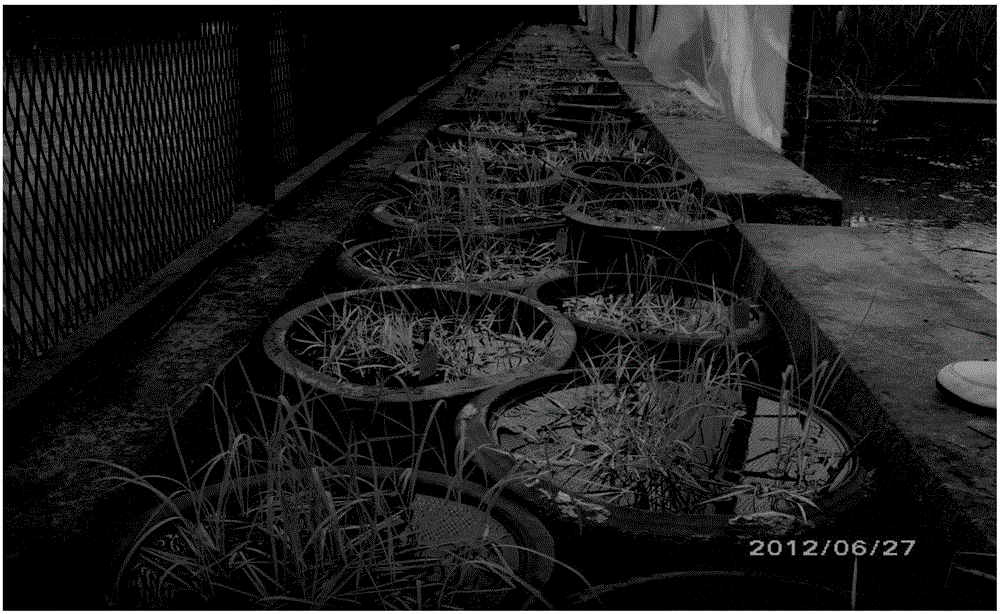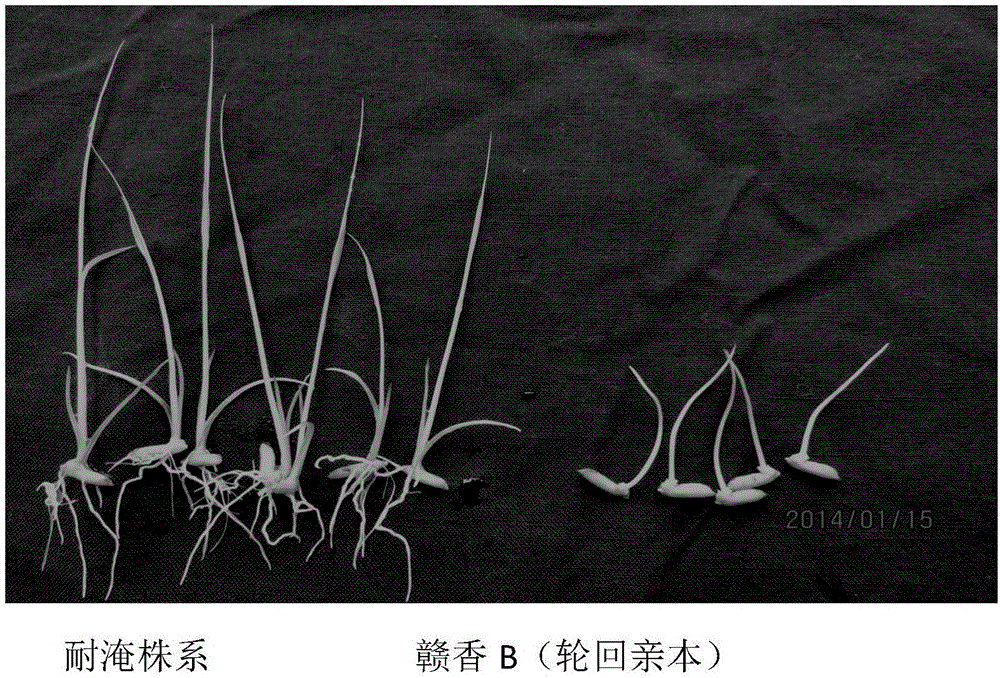Method for identifying hypoxia tolerance and flooding tolerance of rice
An identification method and a technology of waterlogging tolerance, applied in the fields of botanical equipment and methods, germination equipment, application, etc., can solve the problems of lack of direct seeding rice varieties, inability to sow early, cold tolerance and low oxygen tolerance and waterlogging tolerance. , to achieve the significant effect of planting rice, saving cost and increasing efficiency
- Summary
- Abstract
- Description
- Claims
- Application Information
AI Technical Summary
Problems solved by technology
Method used
Image
Examples
Embodiment 1
[0058] Screening and identification of rice varieties or breeding materials for tolerance to low oxygen and waterlogging, using "Ganxiang B / Dongxiang Wild Rice / / Ganxiang B" recombinant inbred line 47 stable lines, and selecting 30 plump seeds for each line or material , put them into water depth bottles (water depth 20-26cm), and then place them in a light incubator with a constant temperature of 25°C. Yu Ganxiang B was used as a control, from the germination of direct seeding dry seeds to the emergence of seedlings and growth on the water surface (December 15 to 12) 25th), the survival rate of the seedlings of the submerged varieties (lines) was 95%, and the non-submerged control could not grow leaves and stop growing after budding. like figure 1 , as shown in 2, is the situation diagram of germination and water production
Embodiment 2
[0060] The low-oxygen and flood-resistant varieties or strains were selected by screening, and crossed with excellent varieties. From the segregation generation population to the stable generation, each generation was identified for low-oxygen and water-logging resistance, and the low-oxygen and low-oxygen tolerance strains were selected as the selected strains. After 5-6 generations of selection and stabilization, new varieties (lines) resistant to hypoxia and flooding can be bred. like image 3 Identification of flood-tolerant germplasms of Ganxiang B and Dongxiang wild rice introduction lines shown
[0061] After 4 years of repeated experiments, 260 imported lines were tested for submergence tolerance. They were sown from dry seeds into deep water and treated for 20 days. The survival rate was 62.5-100%, and the control of Ganxiang B was 0.
Embodiment 3
[0063] Breeding of a new rice line 7676-1 resistant to hypoxia and flooding. This line is a hybrid and backcross progeny of the maintainer line Ganxiang B of "Yebai" as the female parent and Dongxiang wild rice as the male parent. In each generation, more individual plant materials were selected, and the selected materials were tested indoors. The above method was used to breed "7676-1", which is resistant to hypoxia and flooding. The 7676-1 strain was further tested and identified in a light incubator at a constant temperature of 15°C and 30°C. 40 plump dry seeds were selected and repeated three times. Compared with Ganxiang B. 15 days results, the germination rate is 100%, the seedling rate is 100%, the resistance to low oxygen and waterlogging is strong, and the results are consistent under the two temperatures. However, the emergence temperature is higher and the emergence is faster, otherwise it is slower, with a difference of 5-6%. like Figure 4 As shown, the mineral...
PUM
| Property | Measurement | Unit |
|---|---|---|
| Height | aaaaa | aaaaa |
Abstract
Description
Claims
Application Information
 Login to View More
Login to View More - R&D
- Intellectual Property
- Life Sciences
- Materials
- Tech Scout
- Unparalleled Data Quality
- Higher Quality Content
- 60% Fewer Hallucinations
Browse by: Latest US Patents, China's latest patents, Technical Efficacy Thesaurus, Application Domain, Technology Topic, Popular Technical Reports.
© 2025 PatSnap. All rights reserved.Legal|Privacy policy|Modern Slavery Act Transparency Statement|Sitemap|About US| Contact US: help@patsnap.com



